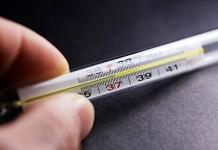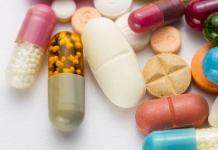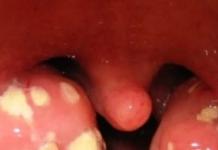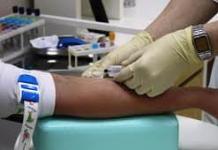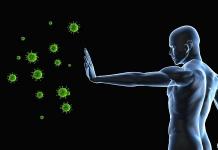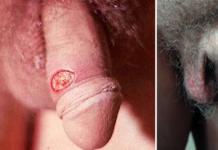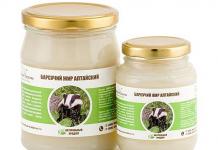Soda is a delicious sizzling drink that quenches your thirst at any time of the year. Consists of a mixture of pure water and carbon dioxide. It has been known to mankind for several thousand years, as evidenced by the records of Hippocrates in his treatises on medicinal properties sparkling water. It is natural from natural sources and created by people using special equipment.

Until the beginning of the 18th century, it was accessible to a small circle of people, but after the industrial revolution it became widespread among the entire population. Nowadays, soda can be found on the counters of all grocery stores or in vending machines with soft drinks. But, rarely does anyone guess how and where soda is made, and at the first sip, many people have a question about how they make soda?
Interesting fact: The first soda was made by Joseph Priestley in 1767. He collected carbon dioxide from a vat of fermented beer and saturated it with clean water.
What is soda made of?

In vending machines and factories, soda is produced according to the same principle. First, water is prepared, and then it is saturated with carbon dioxide. The water is taken clean from natural sources. If necessary, it is passed through filters for water purification. It is checked for the presence of foreign chemical additives, bacteria and various impurities. After that, it is poured into tanks and stored until the start of production.
Related materials:
How and from what are candles made?

Carbon dioxide is delivered in cylinders or emitted at the plant itself using special equipment. Containers and labels for finished products are brought in already prepared form and placed in a conveyor on special belts for further filling. Additionally, it can be rinsed with clean water or a special pattern can be applied to the surface. Dyes and flavors are selected only natural without additional chemical compounds... For sweet waters, fructose syrup is added to soda.
Soda production
The water is pumped into a special container, into which flavors and dyes are added according to the recipe. If necessary, the concentration of all components is checked and the water is sent to the saturation stage.

Through the plumbing, water enters a large cistern, which is called a saturator. It consists of several tanks, pumps and an automated control system. Further under high pressure carbon dioxide is supplied. It saturates water, resulting in the formation of carbonic acid Н2СО3 - a combination of water molecules and carbon dioxide. The connection is not stable, therefore, upon shaking, gas bubbles that are not perceptible to smell, but very pleasant to the taste are formed. The proportions of water and carbon dioxide are selected so precisely that after saturation, the soda is sent to the bottling stage.
Interesting fact: recently, carbonated water has been used to make a wide variety of cocktails, added to baked goods and low-alcohol drinks. The amazing properties of the drink allow it to be used in all areas of the food industry.
Soda water is familiar to everyone from childhood. Not everyone, however, knows the story of its appearance. Sparkling water of natural origin has been widespread since ancient times. But over the centuries, all attempts to artificially carbonate water have been unsuccessful.
For the first time, success was achieved in the 18th century - first by the Englishman Joseph Priestley, and then by the Swedes Tobern Bergman and Jacob Schwepp. The creation of a saturator, an operating plant for carbonation, made it possible to quickly establish industrial production of the drink. In the 19th century, Schwepp made an attempt to reduce the cost of production by using soda for carbonation. This led to the birth of the hitherto known soda water.
Perhaps in historical novels about the Russian Empire you have come across such an incomprehensible name as seltzer water. This is also a type of carbonated water, widespread in the CIS countries more than 100 years ago. At that time, this drink had an elite status. Seltzer water got its name from the source of Niederselters, from where it was originally extracted.
Beneficial features
Carbonated water can be both medical-table and mineral water. In the West, sparkling water is usually denoted Sparkling - compare with Still, the designation still water... Water of various brands perfectly quenches thirst, even in the hottest weather! Sparkling water is good for all day drinking and is often good.
Main purpose soft drinks- quench thirst - largely depends on their saturation with carbon dioxide. A well-carbonated drink has a refreshing property, pungency and uniqueness of taste. Drinks are produced in three types: carbonated water, artificial and natural mineral waters, fruit carbonated waters.
Carbonated water is drinking water that, when cooled under pressure, is saturated with carbon dioxide to a CO 2 content of 0.4-0.5% by weight of water.
Mineral waters of natural origin, extracted from the bowels of the earth, are enriched with acid or alkaline salts, radioactive and trace elements, are more saturated with gases and are mainly used for medicinal purposes, but some of them are also used as table drinks. Treatment of natural mineral waters consists of filtration, cooling, disinfection, carbon dioxide saturation and bottling.
Artificial table mineral waters are obtained by dissolving soda and sodium, calcium and magnesium chlorides (seltzer water) or soda and sodium chloride (soda water), or baking soda, calcium and sodium chlorides and magnesium sulfate (table water) in drinking water, followed by saturation of the solution carbon dioxide and bottling.
Fruit carbonated waters are drinks obtained by diluting special syrups with carbonated water. The assortment of fruit waters is varied. For a drink of each name, the composition of the syrup is approved by the recipe. Mandatory components for all syrups are sugar and food acids, which give the drink a sweet and sour taste. Depending on the name of the drink, the syrup also includes fruit and berry juices, extracts and fruit drinks, infusions on the peel of citrus fruits, infusions and essences of essential plants, grape wines, cognac, which impart a specific taste and aroma to the drink. Some drinks add vitamins C, B1, B2, tonic substances (alkaloids) that restore vigor and strength of a person.
The main stages in the production of carbonated fruit waters are the preparation of sugar syrup and color, preparation of blended syrup, preparation of carbonated water and bottling of drinks.
Preparation of sugar syrup and color scheme. Sugar is added to drinks in the form of a 66-72% solution. For sterilization, the syrup is boiled. Currently, instead of the usual syrup, invert syrup is used, in which about 55% of sucrose is converted into invert sugar with the help of organic acids.
Hot prepared sugar syrup is filtered through mesh trap filters or filter presses. Oryol plant "Prodmash" produces mesh filters. Filter presses have a capacity of 3000 and 9000 l / h; the power of the electric motor to the pump is 2.8 and 4.5 kW, respectively.
After filtration, the syrup is cooled to 25 ° C in coil or plate heat exchangers and sent to closed, mainly enameled collectors of various capacities, designed for a two-day plant's need for syrup.
For coloring drinks in yellow and brown colors, color is used - a product of thermal decomposition of sugar.
When cooking a color, the crucible of an electrically heated boiler is half loaded with sugar, 1-2% water is added and heated with continuous stirring. When the sugar has melted, the temperature is raised to 180-200 ° C and the sugar is caramelized until it turns dark brown. Cooking the color scheme lasts 6-8 hours. The finished color scheme at a temperature of 60-65 ° C is diluted in a boiler with hot water to a concentration of 79-81%. After thorough stirring, the color is poured into a collection and sent to the blending department. The yield of 80% color is about 105% by weight of sugar.
Preparation of blended syrup... Blended syrup is a mixture of all components (except for carbonated water) that make up this drink. Before blending (mixing) fruit juices and fruit drinks are filtered through plate filters. Fruit extracts are first diluted with water at a ratio of 1: 5, and then filtered after 2-3 hours of settling. Citrus essences and infusions are also filtered. Crystalline acids (citric, tartaric) are dissolved to 50% concentration and the solution is filtered. Dyes are diluted with water. The components of the blended syrup prepared in this way are stored in pre-blend measuring tanks of the RVZ type of various capacities, which are installed above the blending apparatus on the pre-blend platform. The volume of measuring vessels for sugar syrup and alcoholic juices should be about 50%, and for acids, essences and dyes, about 8% of the volume of the blended syrup.
Blended syrup is prepared in cold, semi-hot and hot ways. With the cold method of blending, sugar syrup is mixed with the remaining components in a blending vat at room temperature. This method is used in the preparation of syrup from natural and synthetic essences and from aromatic infusions, as well as from alcoholized juices and aged fruit drinks. With this method, the aroma and color of aromatic and fruit raw materials are completely preserved and the blending ends faster.
With a semi-hot and hot blending method, sugar syrup is prepared not in water, but in alcoholic juices. With the hot method, the entire amount of alcoholized juice, provided by the recipe, is set in the syrup boiler, and with the semi-hot method, 1 / 2- 2/3 of this amount; the rest of the juices are added to the blended syrup along with other components. These methods are used when blending syrup for drinks with a high content of sugar and juices, when the dose of blended syrup prepared by the cold method turns out to be large and topped up with carbonated water is not enough to ensure the desired saturation of the drink with carbon dioxide, as well as when using slightly aged juices, with high content of pectins and proteins.
For blending, closed enameled collectors such as VM and VVM, equipped with stirrers, are used; The BBM collectors in the lower part have a jacket for cooling the blended syrup with brine. The useful capacity of the collectors is from 50 to 2000 liters.
When blending, sugar syrup is first added to the collection, then when stirring - juice or extract, then wine, solutions of acids and dyes, and lastly - aromatic infusions and essences. After thorough stirring, the blended syrup is pumped to a filter press or plate filter and then to pressure collectors, from which it flows by gravity into the dosing machine of the filling line. Collectors of the RGZ type or vertical cookers of the VVZ type, having a jacket, with the help of which the syrup can be cooled, are used as pressure collectors. Before bottling, the blended syrup is cooled to 8-10 ° C.
Loss of dry matter during syrup cooking and blend preparation is 2% to the dry matter weight of the raw material.
Making sparkling water. The water used to prepare the drink should be clear, colorless, pleasant to the taste, and odorless. The most suitable is soft water with a total hardness of about 1.5 mg * eq / l. Water that does not meet these requirements is purified and softened. Sand filters are used to clarify the water, and carbon-sand filters are used to decolorize and eliminate odor. Biological water purification is carried out either by irradiation with ultraviolet light, or by filtration on frame filters with microporous plates made of filter carton or on ceramic filters. Water with a hardness of more than 6 meq / l is softened on a sodium cation exchange filter. Water purification and softening is usually carried out in the water treatment department of the plant, from where it is sent for saturation, that is, artificial saturation with carbon dioxide.
The solubility of carbon dioxide in water increases with decreasing water temperature, so the water is cooled to 1-2 ° C before saturation. With increasing pressure, the gas solubility also increases. Usually saturation is carried out at a pressure of 0.4-0.7 MPa. The presence of air in the water reduces the solubility of the gas, therefore, before saturation, the water is deaerated using a vacuum or using the difference in the partial pressures of air and carbon dioxide. With an increase in the contact surface of water and gas and the duration of contact, the solubility of the gas increases. In modern saturators, this is done by spraying water in an environment of carbon dioxide, mixing water with gas in a water-jet ejector and passing water through Raschig rings towards the movement of carbon dioxide. The presence of salts in water, especially bicarbonates, reduces the solubility of the gas, since they chemically bind carbon dioxide, therefore they must soften hard water.
Oryol plant "Prodmash" produces automatic continuous-action saturators of the ASK type with a capacity of 3000 l / h, with an electric motor power of 1.7 kW and of the ASM type, with a capacity of 1500 l / h, with an electric motor power of 2 kW.
The CO 2 content in the water at the outlet from the saturator must be at least 0.66% by weight. Gas consumption for carbonating drinks in modern saturators is 1.01-1.2 kg per 100 liters. Losses of carbon dioxide during saturation reach 48-51%.
An instrumental and technological scheme for the production of fruit waters is given in Fig. 1.
The quality of carbonated fruit waters is assessed mainly by taste and aroma and by the saturation of carbon dioxide. The taste and aroma of the drink should be distinctly expressed and correspond to its name. Fruit drinks berry juices, for example "Blackcurrant", "Cherry", "Raspberry", should have taste and aroma, as well as the color of the berries from which they are prepared. For drinks with conventional names ("Theatrical", "Summer", "Cream Soda", etc.), the taste, aroma and color are set by the recipe depending on the raw materials used.
Rice. 1. Apparatus and technological scheme for the production of fruit waters:
1- electric car; 2, 11 - scales; 3- lift; 4 - bunker; 5- automatic scales; 6 - syrup boiler; 7 - mesh filter; 8, 12, 14, 25, 31, 51, 56 - pumps; 9, 32 - heat exchangers; 10 - tinting boiler; 13 tanks for storing fruit drinks, infusions and wines; 15, 26 filters; 16 - tank for preparation of acid solutions; 17, 18, 19, 20, 21, 22, 23 - measuring containers for sugar syrup, juices, fruit drinks, infusions, wines, solutions of acids, dyes and essences; 24 - blenders; 27 - collections of blended syrup; 28 - heat exchanger; 29 - pressure measuring tanks of blended syrup; 30 - collection of softened water; 33 and 34 - deaeration and saturation columns of the saturator; 35 - stacker; 36 - belt conveyor; 37-machine for removing bottles from boxes; 38, 42 - plate conveyor; 39 - lift; 40 - machine for cleaning boxes; 41 - machine for stacking bottles in boxes; 43 - bottle washing machine; 44 - light screen; 45 - syrup dosing machine; 46 - filling machine; 47 - capping machine; 48 - mixing machine; 49 - rejection semiautomatic device; 50 - collection of rejected drinks; 52 - labeling machine; 53 - bottle counter; 54 - escalator; 55 - concentrated alkali measuring tank; 57 - alkali working solution tank; 58 - sand filter.
All drinks should be transparent, without sediment and suspensions. The carbon dioxide content in carbonated drinks must be at least 0.4% by weight. When pouring into a glass from a well-saturated drink, gas bubbles are liberated abundantly and for a long time.


Carbonated water is a popular non-alcoholic soft drink... It is either drinking water or natural mineral water enriched with carbon dioxide.
Healing mineral water is enriched with carbon dioxide with a mineralization of more than ten grams per liter. The composition of such water practically does not change during storage, and all its useful components are preserved for a long time. In nature, carbonated water is very rare and is quickly exhaled due to the low concentration of carbon dioxide. gas, losing its properties.
Every American consumes about two hundred liters of soda a year. For comparison, the average citizen of the CIS drinks about fifty liters of water annually, and every resident of China - about twenty liters. According to statistics, carbonated water and drinks made on its basis in America occupy 73-75% of the total production of non-alcoholic products.
The compressor for the saturation of water with carbon dioxide was invented by Tobern Bergman, a Swedish designer. In the 19th century, this apparatus was improved and its industrial analogue was created. However, the production of water was very expensive, so baking soda was used for carbonation.
Carbonation in modern production is carried out by mechanical, chemical methods. Mechanical method consists in hardware carbonation in food tanks, siphons, saturators. Under high pressure, water is saturated with gas from 5 to 10 g / l. The chemical method consists in adding baking soda or acids to the water. The fermentation method is used in the production of cider, kvass, champagne, beer, sparkling wines.
The composition of sparkling water
In the food industry, depending on the composition, weak, medium and highly carbonated water is emitted. Each carbonated drink has its own sweet and sour base. Cyclomat, aspartame, potassium acesulfate (sunnet), saccharin are usually used as sweeteners.
Very often, malic, citric or orthophosphoric acids are added to the water. Caffeine is added to certain types of carbonated water.
Carbon dioxide in water is used as a preservative. It enters into a chemical reaction with water and quickly dissolves in it. Carbon dioxide, killing all pathogenic microorganisms, prolongs the shelf life of carbonated drinks.
Benefits of soda water
The benefits of carbonated water have been known and used since ancient times. At that time, people used water from natural sources exclusively in medicinal purposes... It was used both for ingestion and as a basis for the preparation of medicinal baths. Hippocrates, the famous physician of ancient times, devoted not a single chapter of his medical works to the natural sources of carbonated water.
The benefits of carbonated water were so exceptional and obvious that at the end of the eighteenth century, industrialists turned their attention to this drink. Since then, sparkling water has been sold all over the world. English chemist Joseph Priestley first created a carbonated drink synthetically.
Only natural carbonated water can bring significant benefits to the human body. Chilled sparkling water is a better thirst quencher than regular water. It is prescribed at a low acidity level to improve gastric acid production. Neutral molecules of natural water nourish the cells of the whole organism and alkalize the blood plasma. Sodium in such a natural drink activates the action of the body's enzymes, maintains muscle tone and acid-base balance. Magnesium and calcium prevent calcium leaching into the muscles under various loads. Carbonated natural water improves the functioning of the lymphatic, nervous and cardiovascular systems, increases appetite, increases hemoglobin, and improves digestion.
 Sayany, Baikal, Duchess, Tarhun - carbonated drinks containing extracts of medicinal herbs. Tarragon in Tarragon and Duchess has an anticonvulsant effect, improves digestion and increases appetite. Sayan drink contains essential and tannins, ascorbic acid and other useful substances. Lemon syrup and leuzea extract in its base relieve fatigue and increase muscle tone, stimulate the nervous system. Pear infusion in Duchess perfectly quenches thirst and also has a diuretic effect.
Sayany, Baikal, Duchess, Tarhun - carbonated drinks containing extracts of medicinal herbs. Tarragon in Tarragon and Duchess has an anticonvulsant effect, improves digestion and increases appetite. Sayan drink contains essential and tannins, ascorbic acid and other useful substances. Lemon syrup and leuzea extract in its base relieve fatigue and increase muscle tone, stimulate the nervous system. Pear infusion in Duchess perfectly quenches thirst and also has a diuretic effect.
The harm of soda water
Most nutritionists and doctors talk about the dangers of synthetic carbonated water for the human body.
Soda water can harm the body of young children, as well as lactating and pregnant women and people suffering from allergies and obesity and diseases of the gastrointestinal tract. Carbon dioxide can cause flatulence, bloating, and belching.
Carbonated drinks are usually high in sugar. Regular consumption of sugar in large quantities often leads to disruption of the pancreas and endocrine system and increases the risk of developing diabetes mellitus, atherosclerosis.
Synthetic carbonated drinks are very poor at quenching thirst and are often addictive. Excessive consumption of soda disrupts fat metabolism and water-salt balance in the body, and also increases the concentration of harmful cholesterol in the blood plasma.
Sweeteners in these drinks can cause allergic reactions, urolithiasis and blurred vision.
Caffeine has a stimulating effect on the nervous system. In addition, it can contribute to the development of addiction.
Many carbonated drinks contain sodium benzoate. In combination with ascorbic acid it releases the harmful carcinogen benzene. This substance is capable of destroying human DNA.
Daily intake of fluids is necessary for a person, like air and food. But no one wants to use ordinary water and replaces it with tea, coffee, juices, compotes and soda water. And if simple clean water makes up for the lack of fluid, then lemonade, on the contrary, can cause significant harm to health and cause irreversible reactions.
About what harm of carbonated drinks on the human body, much has been said, nutritionists and supporters healthy way lives are everywhere reminded of the influence of carbonated lemonades, give examples of the consequences, but people both used it and continue to drink instead of ordinary water. Sweet water with gas has become a favorite drink of all generations, and the thorny bubbles of carbon dioxide in it have not left anyone indifferent. At the same time, you can often see how young mothers give it even to children, without thinking about the composition of the soda. What does carbonated water bring: benefit or harm? Can I give it to children? And how much lemonade can adults consume?
The composition of all carbonated lemonades presented today in our supermarkets and stores is approximately the same, and their main component is water. When only carbon dioxide is added to the water, a drink is obtained that quenches thirst well, refreshes and at the same time tastes better than plain water.
Important! Normally, the content of carbon dioxide in such a drink should not exceed 10 g per 1 liter.
Carbon dioxide in the composition of mineral water is needed in order to preserve its properties and make it resistant to bacteria. At the same time, carbon dioxide is considered the least harmful preservative. But for the sake of economic benefit, manufacturers add various components to lemonades that do not quench thirst and do not compensate for the lack of fluid in the body, but only increase the desire to drink.
These include:
- sugar or sweeteners;
- preservatives and food acids that extend the shelf life of the product;
- colorants, flavor enhancers and flavors;
- sometimes caffeine.
Together, these ingredients stimulate taste sensations and produce a false sensation of thirst quenching. But the most dangerous in sugary drinks and lemonade is that their components increase the production of pleasure neurons in the brain, as in drug addicts and alcoholics. And this can provoke the development of addiction to such water. To neutralize the negative effects of lemonade, you need to drink a lot of clean, non-carbonated and non-mineral water.
What are the dangerous components of carbonated water?
Let us consider in more detail what are the main ingredients of lemonades and sweet water with gas and how they affect us, and determine what is the harm of lemonade to human health.
Sugar
Sugar is an easily digestible carbohydrate, the health hazard of which lies in its quantity - 1 glass of sweet lemonade contains up to 5 tablespoons of sugar! And if you consider that during the heat you can drink more than one liter of such liquid, then the result is a serious figure. Of course, someone might say that sugar is the same glucose, which increases mental activity, performance and is a source of energy, not realizing that it quickly turns into fat and settles on the sides, hips and abdomen.
Please note: In addition, sugar causes tooth decay, diseases of the organs of the cardiovascular system, and even the development of atherosclerosis. And a large amount of glucose in the blood leads to an increased production of the hormone insulin, which is responsible for its processing, to a violation of the functionality of the pancreas and provokes the development of diabetes mellitus and obesity.
Today, in an effort to reduce the amount of glucose in their products, many manufacturers have switched to the production of sugar-free lemonades and use sugar substitutes - synthetic substances that are also not harmless to health.
Sweeteners:
- promote the formation of kidney stones;
- negatively affect vision;
- can cause allergies in its various manifestations: from itching to Quincke's edema.
But a common property of all sweeteners is that they are carcinogenic and can cause cancer.

Acids and preservatives
In the production of lemonades and sugary drinks, it is customary to use citric and orthophosphoric acids (E330 and E338, respectively), which act as preservatives and flavor enhancers, helping manufacturers to recreate tastes identical to natural ones. But E338 in a sweet drink washes out calcium after consumption, which causes disruptions in the health and development of osteoporosis even in young people. And with the regular intake of citric acid E330, the enamel of the teeth dissolves, which leads to the development of caries. In addition, it causes gastritis, urolithiasis and renal colic.
Attention! The most dangerous complication due to the intake of lemonade in large quantities is the destruction of calcium, which leads to fragility of bones and their prolonged fusion. Sometimes a lack of calcium leads to disability.
For a long shelf life of the drink and preservation of the taste of lemonade, sodium benzoate (E211) is used, which turns into toxic benzene. This element leads to mutations in cells and increases the risk of cancer.

Caffeine
This substance is found in energy drinks. Caffeine gives energy, increases a person's performance, making him active and vigorous. But the catch is that cheerfulness quickly disappears, and in its place there is irritation, apathy, lethargy, drowsiness and fatigue. The next portion can correct the situation, but not for long. And as a result, the use of a caffeinated drink causes not only irreparable damage to human health, but also persistent addiction, and turns into addiction.
Carbon dioxide
Without carbon dioxide, soda or lemonade won't be. It is for the hissing and sharp gas bubbles that hit the nose and pinch the tongue that both children and adults love carbonated drinks. The gas itself is harmless, but dangerous for the stomach and the entire gastrointestinal tract. Carbon dioxide, which is contained in the gas, is released during a chemical reaction with water and irritates the mucous membrane of the gastrointestinal tract, which leads to exacerbations of peptic ulcers, enteritis and gastritis.

What are the consequences of drinking soda?
Sugary drinks and lemonade with carbon dioxide and other additives are synthetic products that do not carry any nutritional value for health. The main harm that lemonade with gas does is in the action of carbon dioxide and sugar present in the composition of this drink.
They can cause:
- increased gas production, belching, and painful bloating;
- disruption of the endocrine system;
- increasing insulin production;
- the development of diabetes mellitus;
- violations in the liver;
- dehydration of the body.
Therefore, most often sweet water lovers suffer from overweight or even obesity, have health problems and mental disorders. This is due to the fact that the intake into the body a large number"Fast" carbohydrates lead to the fact that they are deposited in the form of fat.
And the calories that are part of sweet water with gas do not have any effect on the feeling of hunger - it remains the same even after a large amount of soda drunk. Therefore, a person begins to consume much more food with a high energy value than his body needs.
Remember! Sugary carbonated drinks are not able to quench their thirst, but only cause and intensify it, and as a result, a person drinks more of it. Therefore, all the calories and carbohydrates contained in such water, over time, are deposited at the waist and hips.
Contraindications to soda
Despite all the warnings from nutritionists about the negative health effects of lemonades, most people still continue to drink sugary drinks with gas, and in unlimited quantities.
But there are groups of people for whom they are absolutely contraindicated. It:
- suffering from chronic diseases of the digestive system;
- children under 3 years old;
- pregnant and lactating women;
- people with obesity and diabetes;
- losing weight;
- allergy sufferers and asthmatics;
- suffering from hormonal disorders.
Lemonade is especially contraindicated for those who often have gingivitis, stomatitis and other "dental" diseases. But if you do not belong to any of these groups of people who are contraindicated in the use of sweet lemonade with gas, this does not mean that you can drink it regularly. After all, even minor body reactions, such as flatulence, bloating, heartburn, frequent belching and seething, indicate its negative effects and become a reason to think: is this sweet water not safe for my health? It is impossible to determine in advance what will be the reaction of the body to the consumption of carbonated drinks. It depends on general condition organism, the presence of chronic pathologies and hereditary predisposition.
Is there any benefit?
No matter how many reports are made and no matter how many examples are given about the dangers of lemonades with gas, such water can even be useful. It all depends on the contents of the bottle. So, if the composition of sweet carbonated water contains natural ingredients or extracts medicinal herbs, then such a drink will only have a positive effect on the body. For example, "Duchess" and "Tarhun", which contain tarragon - an effective natural remedy that has a vasoconstrictor effect and improves the functioning of the digestive system. The composition of carbonated waters "Sayany" and "Baikal" includes an extract of leuzea - a plant known for its ability to tone the body and relieve fatigue, increase muscle activity and normalize work nervous system... Such waters can be drunk even with diabetes mellitus.
After we have identified the benefits and harms of sweet soda, let's figure out how to reduce its harm to the body, not limit ourselves and sometimes indulge in sweet soda without harm to health.
For this it is enough:
- allow no more than 0.5 liters of soda per day and no more than once a week;
- choose soda in glass containers, and not in aluminum cans or plastic;
- drink a drink through a straw or after releasing gas;
- Go to plain water, compotes, fruit drinks or natural kvass.
Speaking about the harm that carbonated drinks do to our body, we must not forget that they, like any other synthetic product, with regular and excessive use, can affect general well-being a person and significantly reduce his immunity. There is no unequivocal answer to the question whether carbonated water brings harm or benefit to the body. But when choosing such a drink, you should pay attention to its origin: natural or synthetic, to the amount of sugar in it and the shelf life. And, most importantly, do not buy soda every day and do not use it as the main source of drinking. Then there will be no significant harm from sugary carbonated drinks.






